The chances are that lichens are growing closer to hand than you might think. Small in stature, their subtle and furtive beauty passes unnoticed by the casual eye. I first discovered lichens as a coral-like cluster hanging from the branches of a gnarly tree on the edge of Dartmoor, but I also see them as blackened blotches on shoreline rocks and in chartreuse blue-grey on the legs of my wooden garden bench.
Jump to more on
What are lichens?
Not one, but two organisms
Lichens are tough and intricate structures that are not quite a fungus, nor are they a moss. The very first lichens probably occurred before the evolution of land plants, cup fungi species having evolved during the Carboniferous period 358-298 million years ago. A lichen is not a single organism, rather a group of at least two organisms that closely interact in a stable, mutually beneficial (symbiotic) association. This produces a more elaborate and longer lived organism than either partner can form alone. The relationship is between a fungus and at least one alga (most commonly a green alga) or cyanobacterium.
Watch: lichens at Wistman's Wood on Dartmoor
Types of lichens and examples
The bulk of lichen diversity belongs to those with cup-shaped or open-fruiting bodies, including Cladonia, Parmelia and Peltigera. They retain roughly the same form throughout the year and with close observation you can identify them in your own garden or in the wider green spaces around you. The colourful mosaic crusts of lichen can be found colonising a wide range of materials, both natural and man-made in practically all regions of the world. See below for examples of common UK lichens.
Usnea articulata
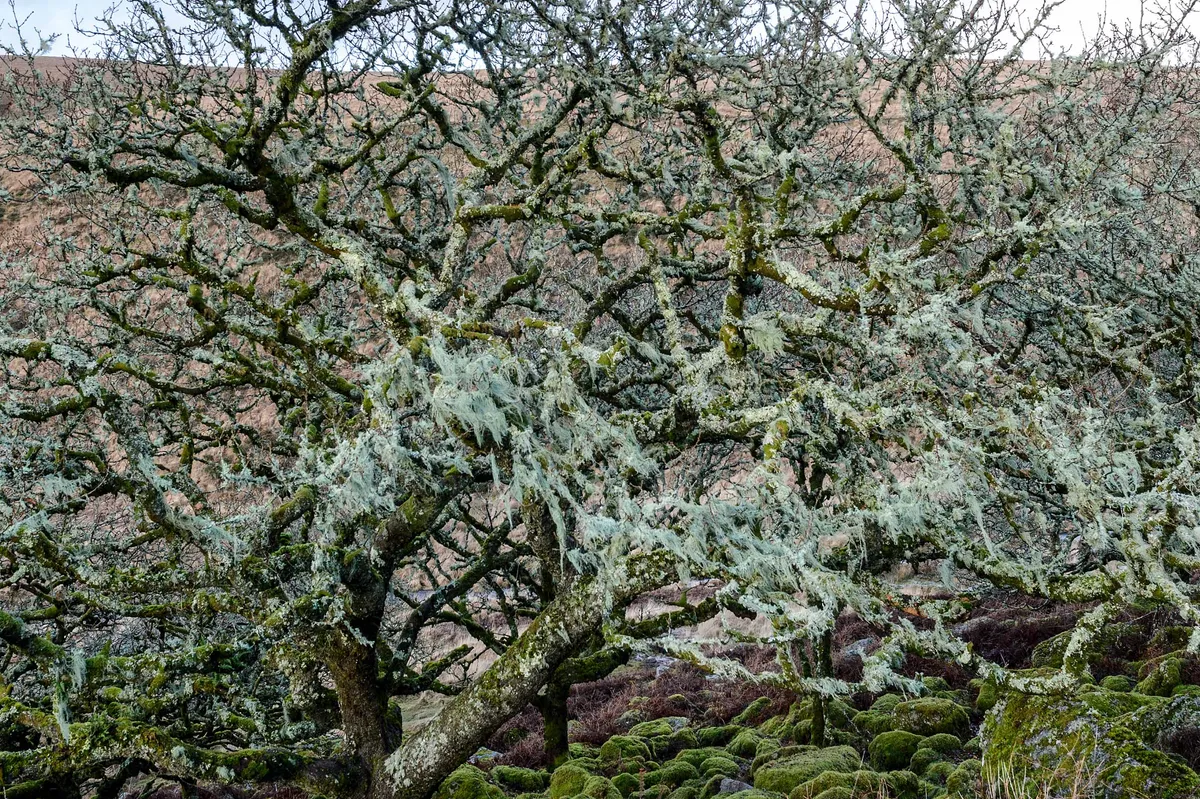
Despite appearances this lichen is often unattached to trees, draping over branches forming soft festoons. Older stems become swollen with constrictions at intervals giving the appearance of strings of sausages.
Cladonia floerkeana
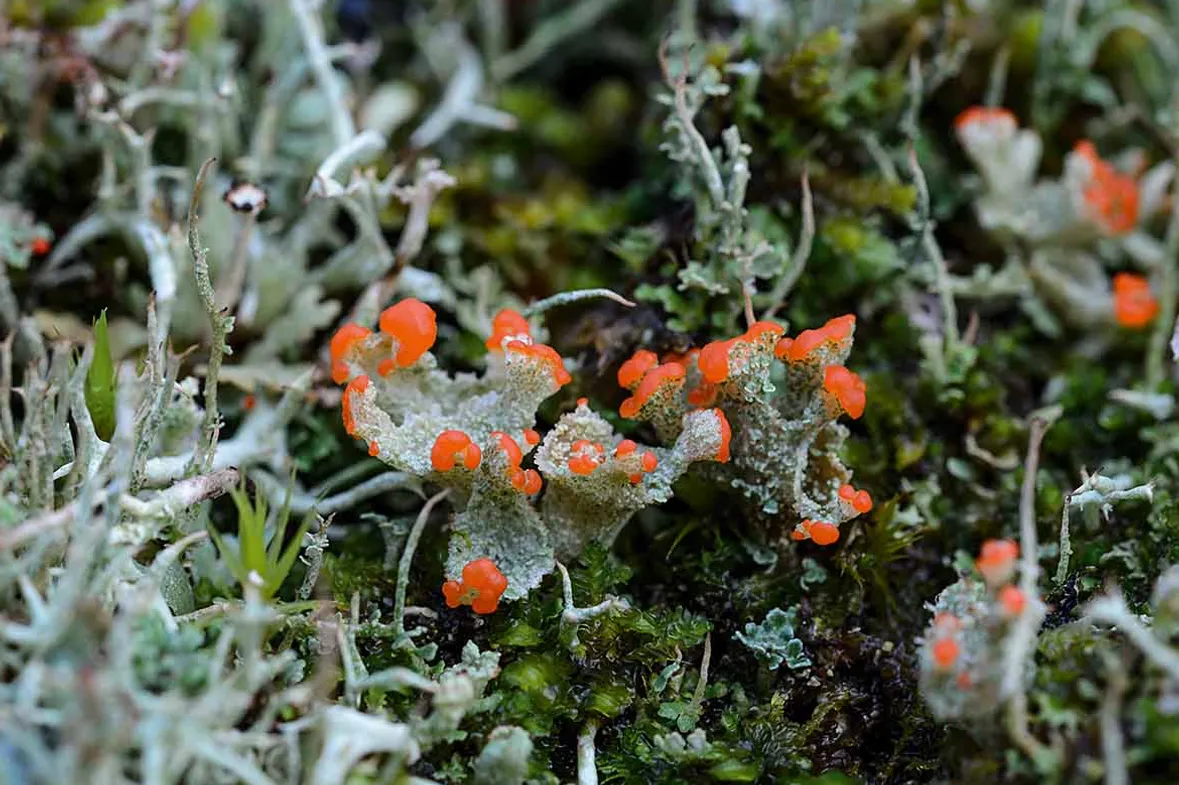
A lichen common on peaty heaths. The basal scales form scattered greenish grey patches. Protruding stalks are sparsely branched and bear large scarlet apothecia (spore-producing bodies) at their tips.
Ochrolechia androgyna
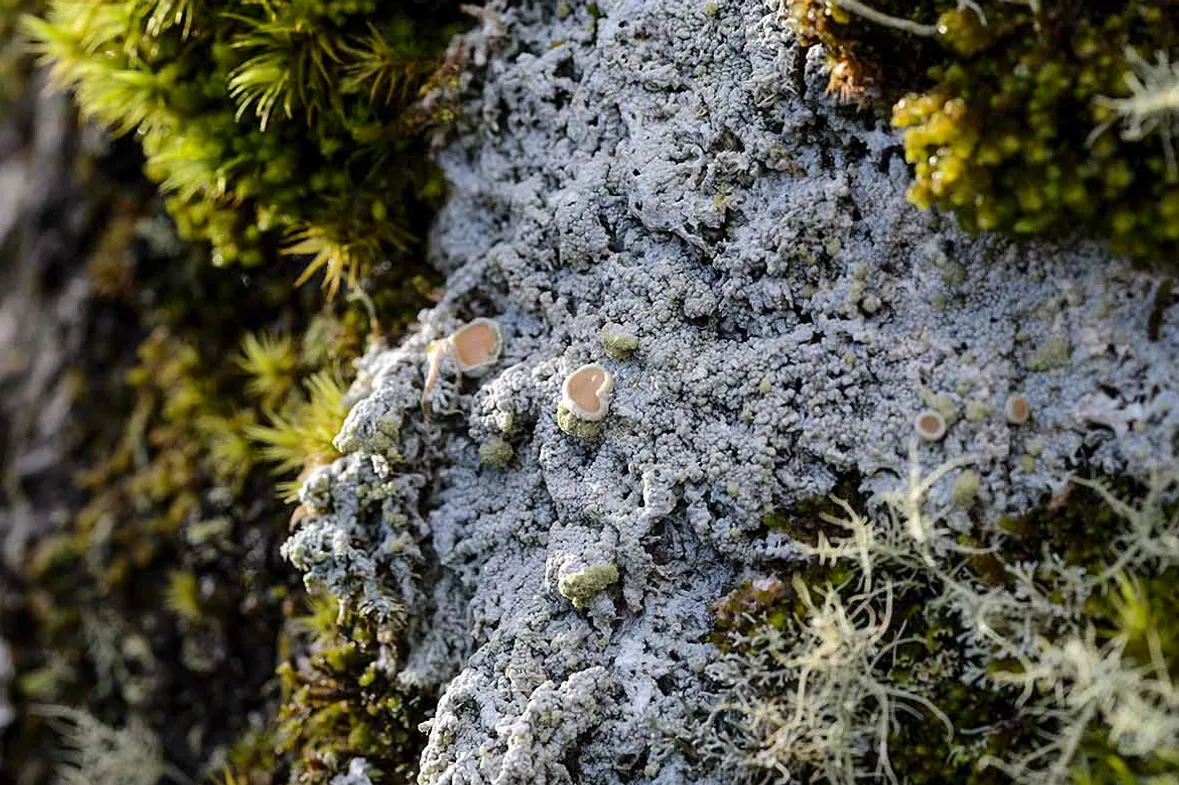
This lichen has a warty, pale-grey crust often tinged with yellow. Abundant soralia (bumps) usually cover much of the surface. Widespread, often growing over moss on rocks and in thinner crusts on acid tree bark.
Flavoparmelia caperata
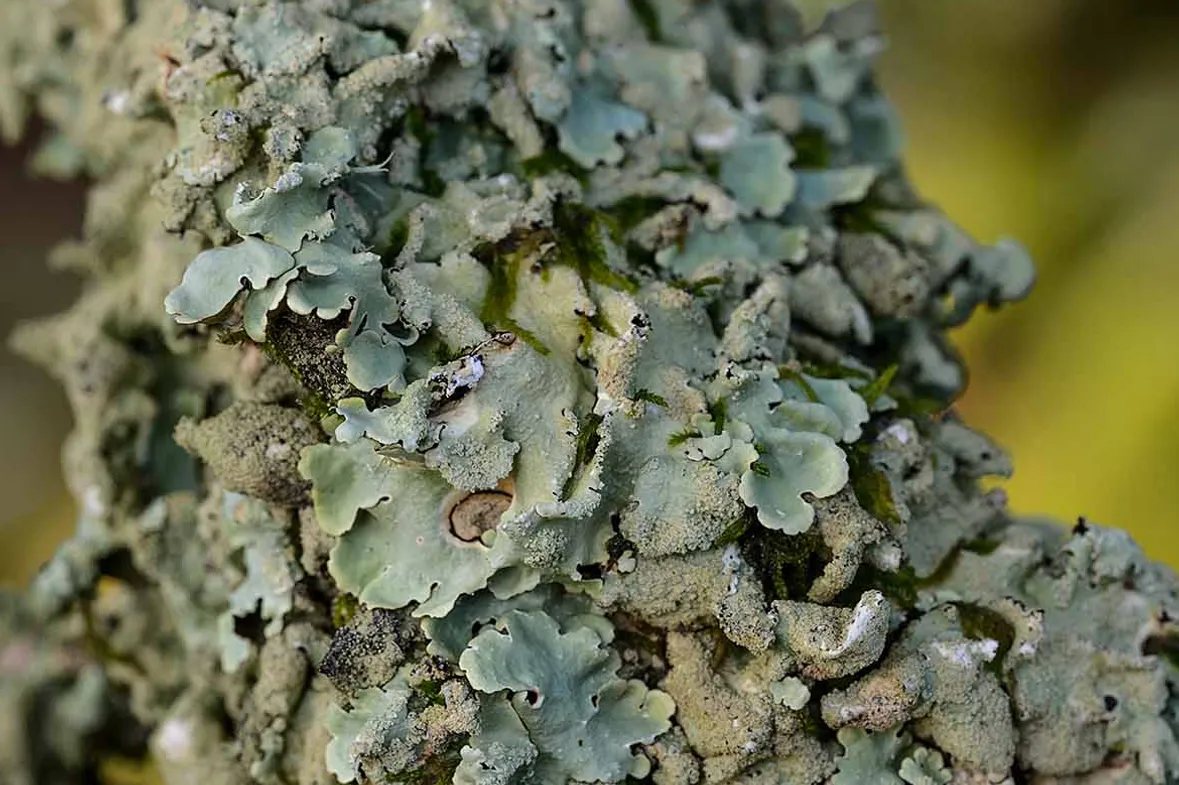
Commonly found in southern England where, on old deciduous trees, it often reaches a large size. The broad lobes of this lichen are slightly wrinkled and a beautiful shade of green-yellow when wet; grey when dry.
Peltigera hymenina
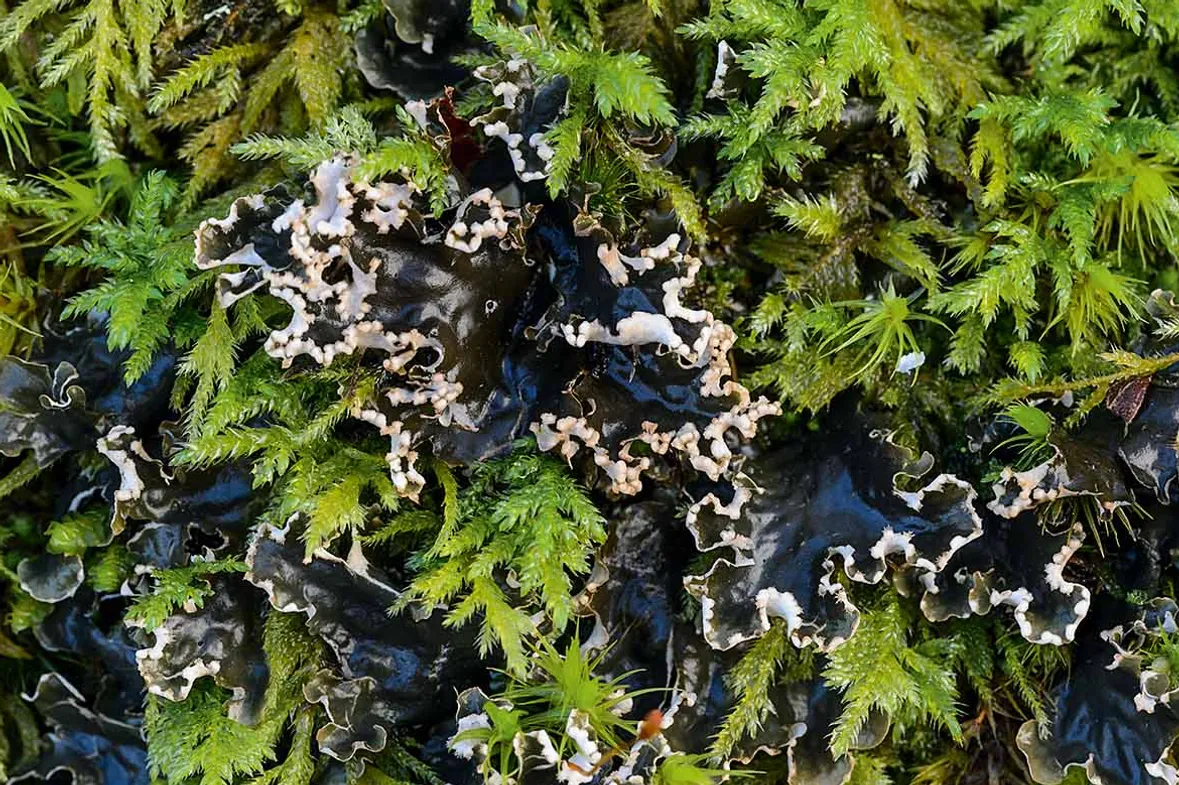
Smooth and shiny felted dark upper surface; pale-beige underside. Red-brown oblong spore-producing apothecia are found on long lobes that curl upwards. This lichen creeps on the surface of the ground.
Cladonia ciliata
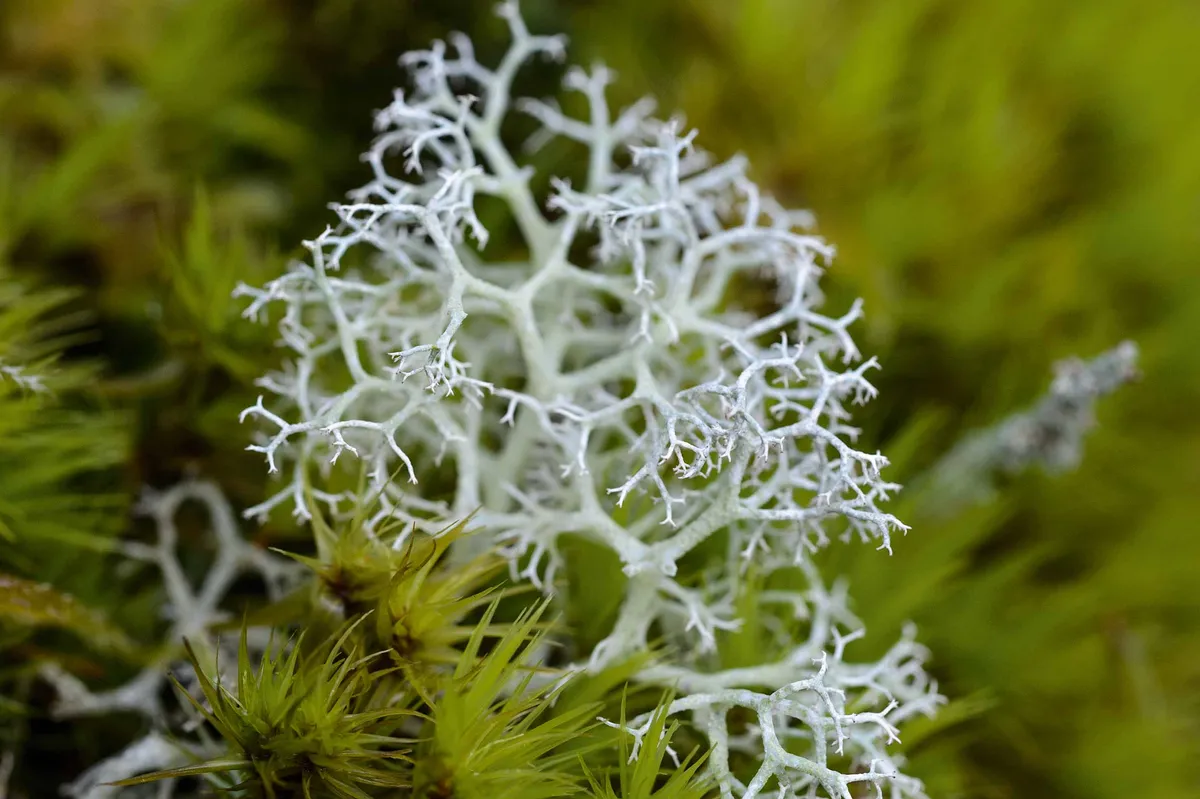
Variable in habit and colour but with the overall appearance of grey moss. There are brown tips on the branched stems of this lichen. Colonies usually form small mounds.
Parmelia omphalodes
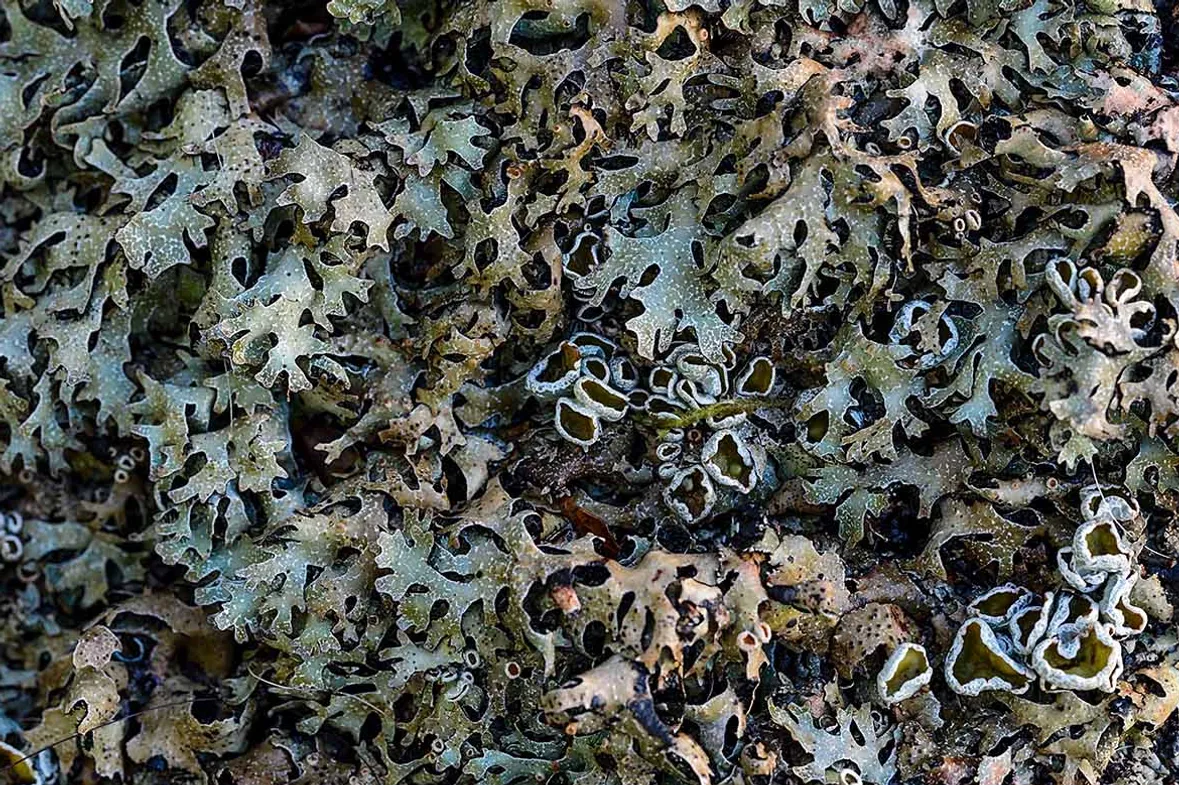
Found on siliceous mountain boulders, scree, upland walls and acid-barked trees. This lichen forms loosely attached, brown leafy clumps. Lobes carry a fine tracery of white lines and often a metallic sheen.
Hypogymnia tubulosa
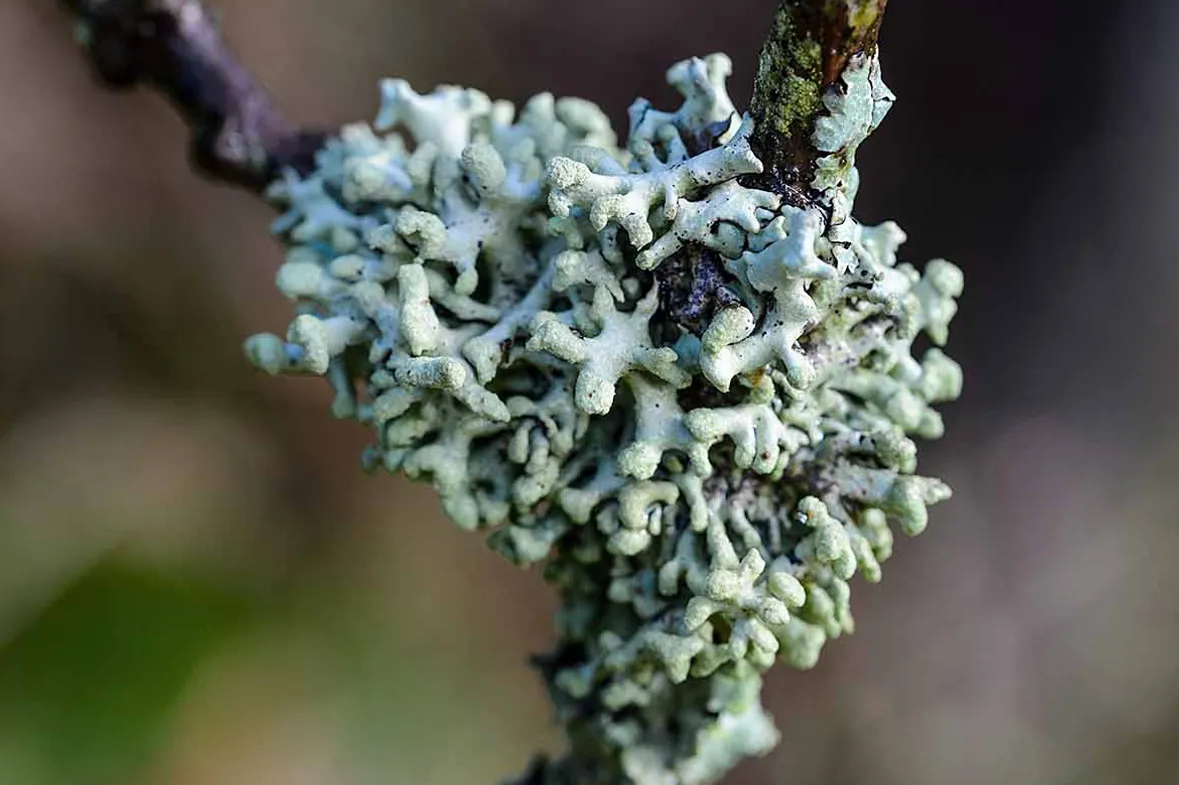
A lichen that mainly grows on twigs and tree trunks attached by a dark undersurface. Lobes are tubular and grow upwards with masses of pale, powdery soredia (reproductive structures) at their tips.
Cladonia crispata
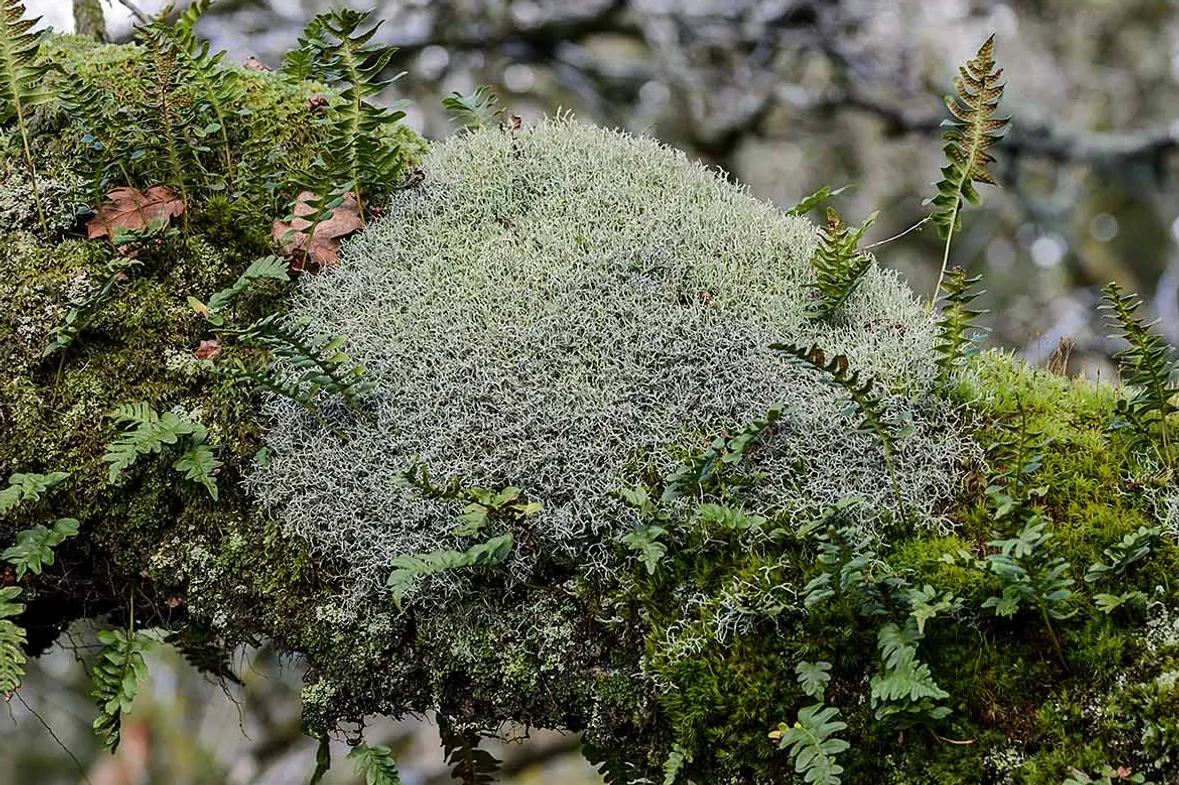
Usually grows on peat heathland forming a layer of scale-like, brown-grey ‘leaves’, from which protrude short, upright, hollow branching stems. Very small cups are held on the tips.
Lasallia pustulata
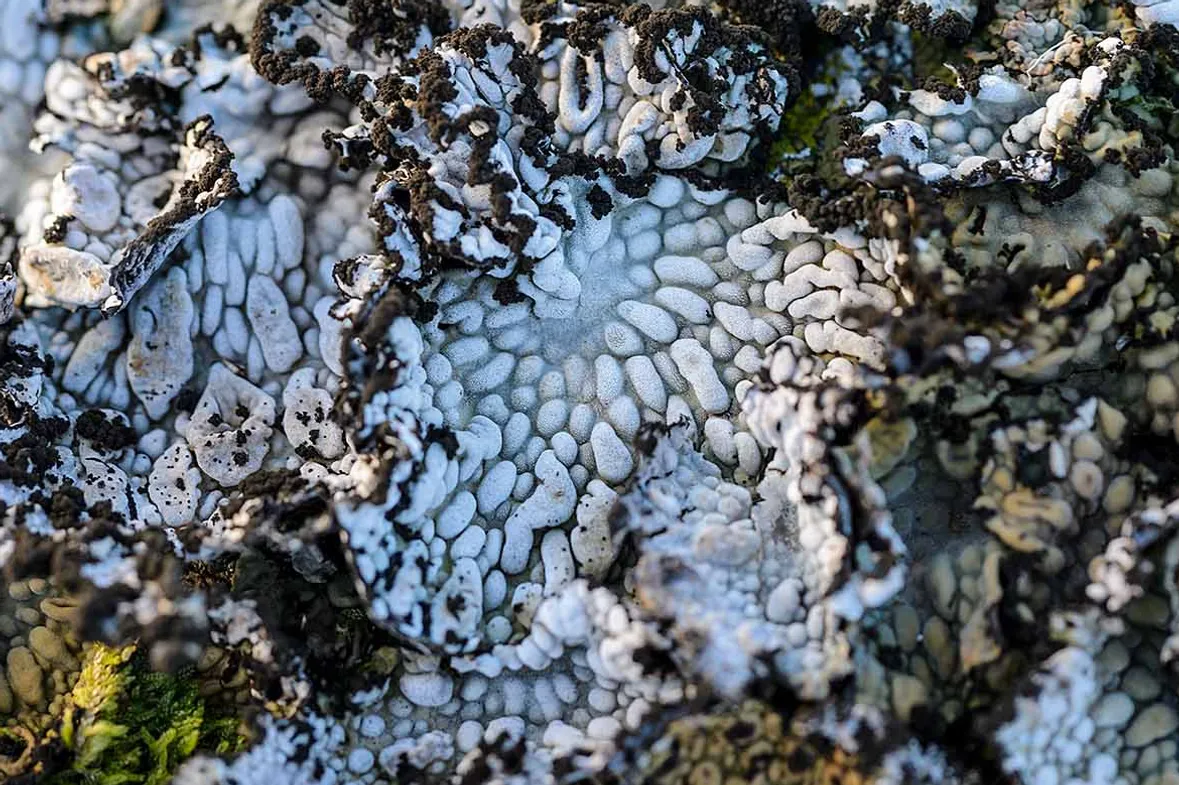
This lichen occurs in large patches with prominent pustules across its surface. The margins have dense tufts of black isidia (reproductive outgrowths). Found on rocks in upland areas.
Hypotrachyna taylorensis
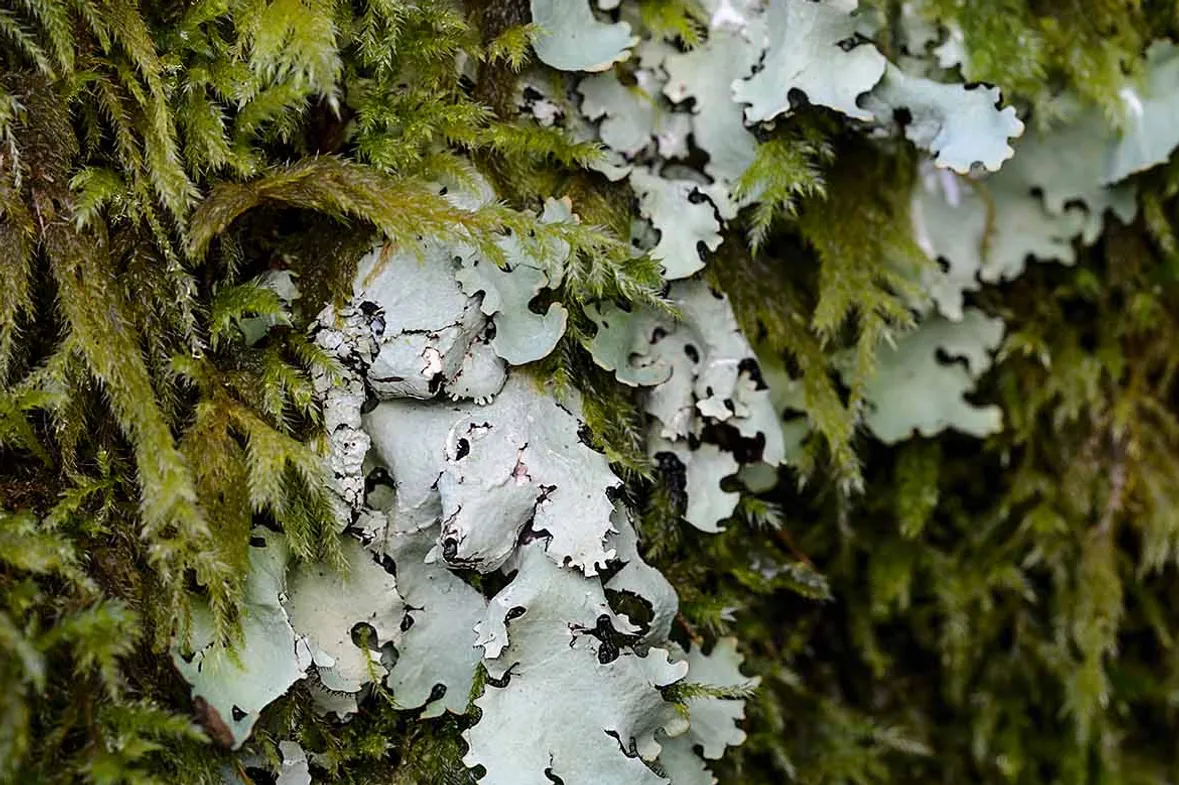
A rock lichen with foliose (leaf-like) growth. The pale, blueish-grey surface is often crumpled and spotted with white, and has overlapping lobes that point in the same direction.
Pertusaria corallina
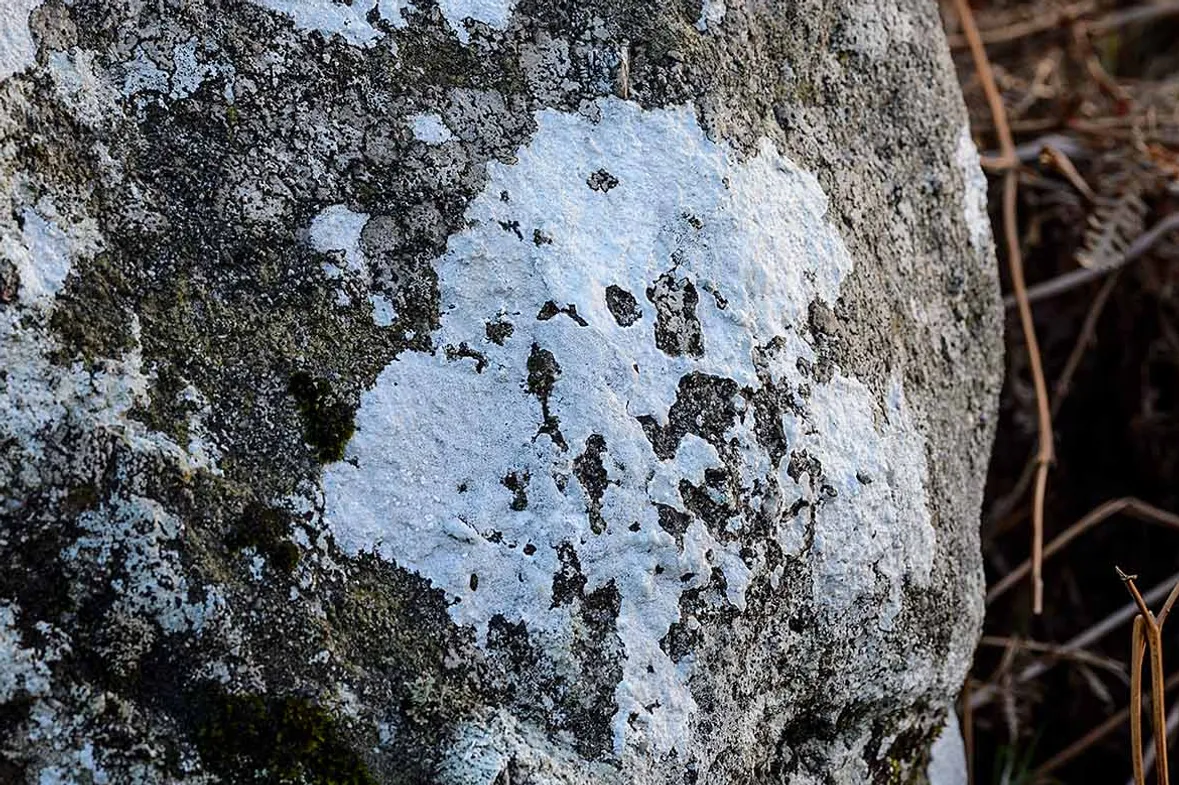
Common on siliceous rocks in upland regions. The lichen orms a thick grey crust often enclosed by a white line. Its surface is very rough. When examined with a lens can be seen to be covered in tiny granular isidia.
Platismatia glauca
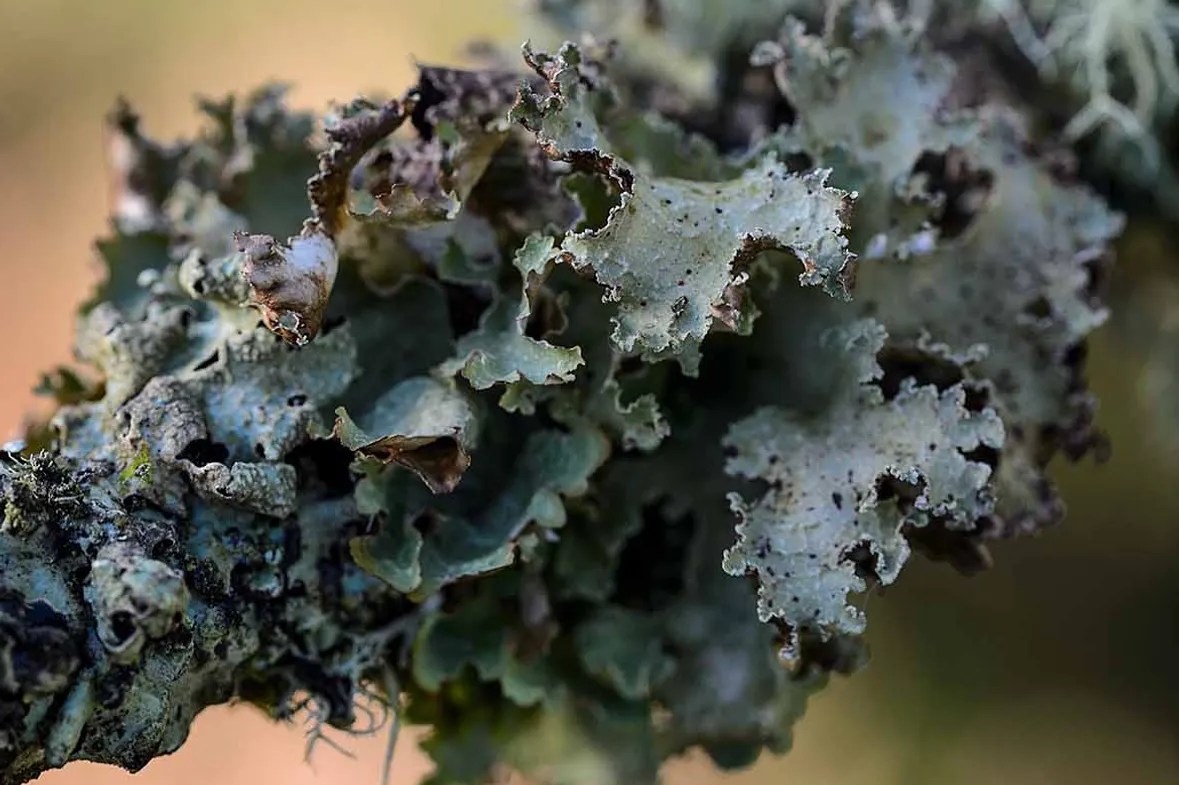
A varied but colourful rag lichen that is common on trees, fences, walls and rocks. Spore-producing discs are rarely found
but white vegetative structures are common around the edges.
Sphaerophorus globosus
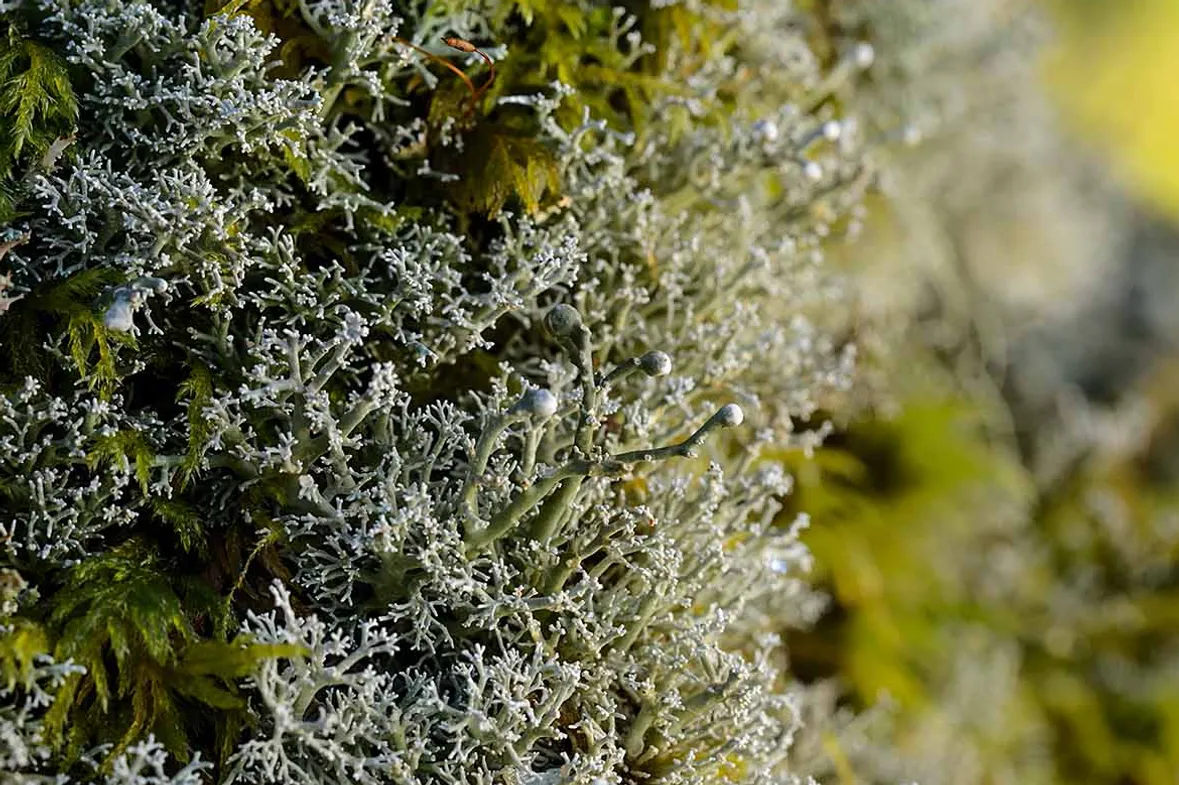
A coral-like fruticose lichen that is found on mossy wet bark in upland habitats in the north and west. Colonises rocks and tree trunks forming much-branched, brownish-grey coral-like tufts.
What lichens are and how they grow
How do lichens grow?
Most require light to grow and tree lichens are most ‘active’ when their hosts are not in leaf. Lichens can adapt to different ecological settings by pairing with different photobionts. Many different groups of fungi form lichens, but with an occurrence in 98 per cent of all lichen species cup-fungi are the most common to do so.
How to lichens reproduce?
Lichens reproduce by discharging spores and also vegetatively by shedding ready-to-grow structures that contain both alga and fungus. Some species form upright branched structures but many are prostrate establishing an expanding, irregular, flattened, multi-lobed crust. If undisturbed rock lichens can survive for hundreds or even thousands of years.

Where to find lichens
They thrive on rock, wood, tree bark and heathland soil but it’s not necessary to head for remote hills and upland forests to make exciting discoveries. Gardens, yards and urban churchyards offer up treasures too. Check the surface of evergreen leaves, the bark of fruit trees, paving slabs and old terracotta pots. Lichens absorb water from the atmosphere very efficiently so they can survive some environmental extremities. Rock lichens are prolific on virtually water-free substrates, such as bare rocks, brick or stone walls. They survive periods of severe desiccation by becoming metabolically inactive but they have no defence against atmospheric pollution.

Lichens and air pollution
Since Victorian times they have been reliable indicators of air pollution. Lichens subtly colour the whole landscape in places where the air is pure, so with its good air quality, combined with high rainfall, southwest England is one of the best places in the UK to spot a diverse range of lichens. However, it is the remote Celtic rainforests, the Caledonian pinewoods, the Atlantic hazelwoods and high montane habitats of Scotland that are a lichenologist’s true nirvana.
Wherever you choose to walk this winter, be sure to take a closer look at the lichens you find growing on trees and take pleasure in the multitude of colours and forms you’ll find.

